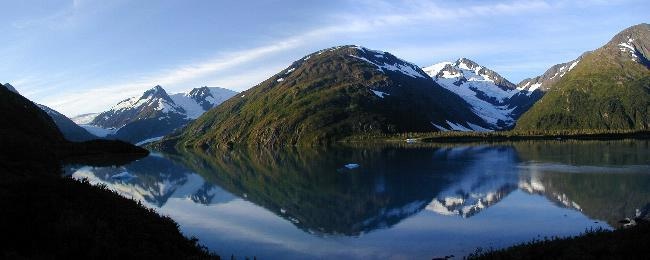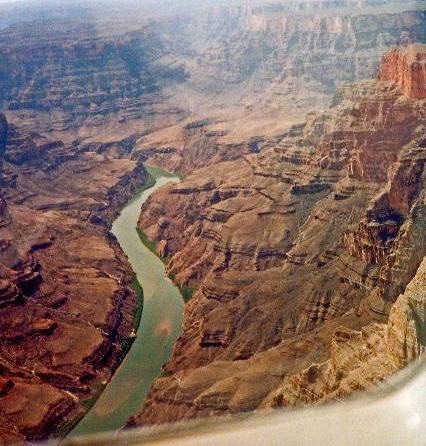The United States of America, located on the North American continent, is the world's most powerful nation with an advanced market-oriented economy. It is the third largest nation in the world in terms of both land mass and population with a total area of 9,826,675 km2 and a population of 331,883,986 as of 2019. The country is bordered by the North Atlantic Ocean and the North Pacific Ocean on the east and west respectively and has a coastline of 19,924 km. Various climatic conditions are experienced across the country, ranging from artic in Alaska to tropical in Hawaii.
 |
| The national flag of USA. Image Credits: CIA Factbook |
Starting in 2008 to the end of 2009, the country was forced to deal with the toughest economic recession since the Great Depression. During this period, oil prices fell by 40%, causing the U.S. trade deficit to shrink as a result of reduced domestic demand. The stable political scenario and advanced technology has helped stabilize the economic crisis and by 2011 the trade deficit had risen to $803 billion with the constantly increasing oil prices. The United States’ economy remains the largest in the world in terms of its GDP, which currently amounts to over $21 trillion.
The United States of America is a land with vast natural resources including coal, copper, lead, uranium, molybdenum, nickel, phosphates, silver, rare earth elements, bauxite, gold, iron, mercury, zinc, potash, tungsten, petroleum and natural gas. It has the world’s largest coal reserves with about 475 billion tons and accounts for about 27% of the total world reserves. The demand for minerals within the US itself is very high; for example, its construction industry consumes nearly 51% of copper mined in the country.
The mining industry in the U.S. is one of the most technologically advanced industries, as it incorporates some of the best technology available to provide safe and sustainable mining options. It not only strengthens the country’s economy, but also provides numerous well-paid job opportunities. As of 2017, over 621,000 people were employed by the U.S. mining industry.

Portage Glacier and Lake Alaska in Alaska. Image Credits: CIA Factbook
Overview of Resources
Every state in United States of America is actively involved in the mining sector. The total direct and indirect value of U.S. mining is $1.9 trillion.
The U.S. mineral production statistics are as follows:
- Fourth largest producer of gold in the world (after China, Australia and Russia)
- Fourth largest producer of copper in the world (after Chile, China and Peru)
- Leading producer of soda ash, beryllium, zinc, and sulfur in the world
Metals
Gold is widely mined in the U.S. to primarily use in jewelry and computer circuitry. The United States is estimated to be home to over $298 billion worth of gold reserves, which is more than any other nation in the world. A majority of this nation’s gold reserves can be found in Fort Knox, Kentucky, as well as within the Phildaelphia Mint, the Denver Mint, the West Point Bullion Depository and the San Francisco Assay Office. Overall, the United States is estimated to have almost 9,000 tons of gold spread across this country.
The United States of America is the largest producer and consumer of lead in the world. A majority of lead in the U.S. is mined in Missouri, as well as in some parts of Alaska, Montana, Idaho and Washington.
Copper, which is widely used in a multitude of consumer products, is extensively mined in the U.S. In fact, two of the largest copper mines in the world are located in the United States, of which include the Morenci mine in Arizona, which is in fact the largest copper mine in North America, as well as the Bingham Canyon Mine in Salt Lake City, Utah. Iron ore production is predominantly conducted in the surrounding regions of Minnesota and Michigan.

The Colorado River flowing through the Grand Canyon in Arizona. Image Credits: CIA Factbook
Industrial Minerals and Gemstones
America is a leading producer of beryllium, as it is home to more than 87% of the world’s beryllium output. The U.S. is also a major producer of phosphate rock and soda ash. Cobalt resources can be found in Minnesota, Missouri, Alaska, Oregon, California, Montana and Idaho. Antimony is a native element that is used as a hardening alloy for lead.
Fossil Fuels
America prides itself for possessing a 240-year reserve of coal based on the current consumption trend. Coal is not only a widely available resource for this nation, as it is found in 38 states, but is also particularly affordable. Coal accounts for almost 94% of the nation's fossil energy reserves, 17.8% of its total energy production and 27.4% of its total electricity generation, as of 2018.
The four varieties of coal available in the U.S. include:
- Anthracite, which has the highest energy content, averaging 25 million Btu per ton
- Bituminous, which has higher heating value than lignite or sub-bituminous, averaging 24 million Btu per ton
- Sub-bituminous, which has combustible feature with higher heating value than lignite, averaging 18 million Btu per ton
- Lignite, which has high moisture and ash content with lower heating value, is mostly used in the Southwest of America for generating electricity and averages 14 million Btu per ton
The coal mining industry in the U.S. is very active and employs a little over 80,000 people as of 2018. The industry follows the concepts of modern mining and ensures that the coal plants today emit 40% less CO2 than those of the 20th century, according to the World Coal Institute. Five million acres of land have been used for mining coal and government regulations ensure that inactive mines are reclaimed and made usable for other purposes.
The U.S. oil production grew by17% in 2018 to a total of 10.96 million barrels per day as a result of oil production by tight rock formations by horizontal drilling and hydraulic fracturing processes. The United States Energy Information Administration anticipates this trend to continue to rise in 2019 and 2020 to reach 12.3 million and 13.0 million barrels per day, respectively.
Investment
As of 2016, the United States mining industry produced an estimated $74.6 billion in revenue from the minerals and materials processed that year.
In an effort to ensure less impact to the surrounding environment and promote the occupational safety of its employees, the U.S. mining industry has adopted various new mining techniques. This has been achieved with sophisticated communications systems, latest training procedures, advanced technology, better safety awareness and regulatory laws. In fact, the U.S. mining industry experienced a total of 27 mining fatalities, lowest number of fatalities ever recorded.
The Office of Surface Mining Reclamation and Enforcement (OSM) plays an instrumental role in protecting the community and the environment from the ill effects of surface coal mining operations. It works with colleges, universities and other State and Federal agencies to develop better ways of reclaiming mined lands and protecting the environment. The OSM also undertakes training programs for state and tribal professionals in a wide range of needed skills.
The National Mining Association (NMA) has developed several sustainability principles taking into consideration social economic and environmental perspectives. The NMA membership includes more than 325 corporations.
Thanks to the ever-increasing demand for minerals globally, the U.S. mining industry - with its sophisticated techniques and skilled labor - has very bright prospects in the coming years.
Disclaimer: The Author of this article does not imply any investment recommendation and some content is speculative in nature. The Author is not affiliated in any way with any companies mentioned and all statistical information is publically available.
Sources and Further Reading
This article was updated on the 24th May 2019.
Disclaimer: The views expressed here are those of the author expressed in their private capacity and do not necessarily represent the views of AZoM.com Limited T/A AZoNetwork the owner and operator of this website. This disclaimer forms part of the Terms and conditions of use of this website.